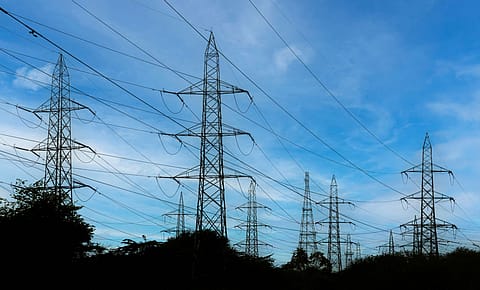India’s electricity demand surges ahead: IEA warns of record-breaking growth till 2027
India’s electricity demand to grow 6.3% annually till 2027, driven by economic expansion, rising AC usage, and shifting agricultural power consumption, says IEA.

India’s electricity demand will grow at an average annual rate of 6.3% over the next three years, stronger than the 2015-2024 average growth rate of 5%, according to the International Energy Agency’s (IEA) Global Electricity Outlook 2025.
In contrast, global electricity demand rose by 4.3% in 2024 and is expected to continue growing at nearly 4% annually until 2027, driven by increasing industrial production, rising air conditioning use, accelerating electrification, and the expansion of data centres worldwide. Over the next three years, global electricity consumption is projected to rise by an unprecedented 3,500 TWh. Most of the additional demand will come from emerging economies, which are expected to account for 85% of the growth. More than half of the global electricity demand increase in 2024 came from China, where it grew by 7%—a similar rate to the previous year. The analysis predicts that China's electricity demand will grow by an average of 6% annually until 2027.
Economic Growth and Electrification Driving Demand
Following a strong 8.3% increase in 2023, electricity demand in India grew by 5.8% year-on-year in 2024, driven by robust economic growth. While consumption surged by 8.5% in the first half of the year due to intense and prolonged heatwaves, demand growth moderated in the second half amid milder weather. The IEA notes that rapid economic expansion, increasing electrification, and rising air conditioner ownership will continue to bolster India’s electricity demand.
India’s peak electricity load rose from 148 GW in 2014 to 250 GW (+68%) in 2024, fuelled by rapid industrial expansion, agricultural development, increased electricity access, and greater use of air conditioning and household appliances. Consequently, electricity demand in residential and commercial sectors increased by approximately 60-65% between 2014 and 2024. “While strong interconnections between states and the operation of thermal power plants enable Indian utilities to meet energy demand throughout the year, the rapid rise in peak load presents a major challenge for the electricity grid and national authorities,” the IEA observes.
Air Conditioners Driving Demand
Although less than 20% of Indian households own an air conditioner, cooling accounted for an estimated 60 GW of the total peak load in 2024, as AC sales hit a record 14 million units—27% higher than the 11 million units sold in 2023, according to the IEA. By 2030, cooling equipment is expected to contribute one-third of India’s peak electricity load, potentially reaching 140 GW. Data indicates that for every incremental degree increase in daily average temperature, India’s daily peak demand rose by more than 7 GW in 2024—twice the increase observed in 2019. By 2027, this figure could exceed 11 GW per degree.
Changing Agricultural Pump Usage
The IEA notes that electricity consumption in Indian agriculture is evolving due to various government intervention programmes, subsidies, and policies. In Rajasthan, agricultural demand accounts for approximately 40% of total statewide usage. Previously, farmers typically operated water pumps at night when agricultural feeders supplied free or subsidised electricity. Others relied on diesel-fuelled pumps, which are costlier to run and more polluting. Until 2019, electricity load was generally higher in the evening, peaking between 7:00 and 8:00 PM due to agricultural and residential demand.
However, this trend is changing. Anticipating growing peak loads and recognising the increasing role of variable renewable energy (VRE), India launched the PM-KUSUM Scheme in March 2019. This programme subsidises solar pump installations, incentivises the connection of distributed solar PV to agricultural feeders (shifting supply to daytime hours), and promotes large-scale solar PV installations in agricultural areas. With PM-KUSUM’s expansion in January 2024, hourly demand data shows that the scheme has reshaped India’s average load profile, shifting a significant portion of the evening peak to midday—when VRE generation is highest. The programme has also curbed diesel consumption in the agricultural sector by promoting electrification.
Recommended Stories
Reducing Evening Peak Demand
The IEA highlights that India's introduction of Static Time-of-Day (ToD) tariffs for industrial, commercial, and public service consumers has contributed to lower evening peak demand, as electricity prices are higher between 6:00 and 10:00 PM in most states. In August 2023, the Ministry of Power implemented the Time-of-Day Electricity Tariff System, mandating at least a 20% tariff reduction during solar hours and a minimum 20% increase during peak hours. The ministry made ToD tariffs mandatory for all medium-to-large commercial and industrial consumers from 1 April 2024, with smaller consumers (below 10 kW) set to be included from 1 April 2025.
The ongoing rollout of smart meters will enable suppliers to offer dynamic tariffs and extend ToD pricing to residential consumers. Through these measures, the Indian government aims to further shift electricity load from evening to daytime hours. Without effective storage deployment, the growing expansion of solar PV alone will have a limited impact on addressing the increasing evening peak.
The India Energy & Climate Centre (IECC) estimates that evening power shortages of 20-40 GW are likely by 2027, even if all planned dispatchable capacity is commissioned on schedule. According to the National Electricity Plan 2023-2032, published by the Ministry of Power, India’s peak demand is forecast to reach 458 GW in 2032—an 83% increase from 2024.